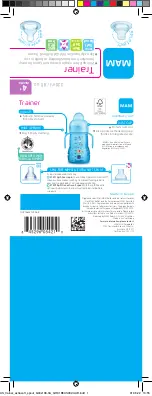
Loading and Use
Vehicle Mounting
Use only on a vehicle equipped with a 2” class III or class IV hitch receiver with a minimum tongue weight capacity of 250lbs.
To lower
the center of gravity we recommend mounting the rack in the folded or collapsed position. If clearance allows always mount the bike
rack in the deepest of the two 5/8” hitch pin locations which will bring the rack closer to the rear of the vehicle. Install 5/8“ hitch pin or
5/8” hitch pin lock to secure the rack to the hitch receiver on the vehicle. Tighten the hitch wedge using a 9/16” wrench or ratchet until
the rack no longer wobbles in the hitch receiver. To remove the rack simply loosen the 9/16” bolt on the front of the hitch followed by
removal of the 5/8” hitch pin. If the wedge fails to retract gently push on the 9/16” bolt head or lightly tap the bolt head with a mallet
until it is free. Once the hitch pin is removed and the wedge is free/loose the rack can be removed from the vehicle.
Bike Mounting
Always load the rack from left to right and unload the rack from right to left. To mount the bikes simply grab each bike by the front fork
and the rear seat stay. Place the handlebars in the handlebar bracket so that the stem is positioned between the two forks on the
bracket. Take caution when loading any bike with handlebar or stem mounted accessories as the brackets may damage these acceso-
ries. Use the rubber strap on the handlebar bracket to go over the handle bar and down to the mounting post. The rubber strap should
not
go over the stem of the bike. Align the rear wheel to the center of the corresponding rear wheel holder. Secure the rear wheel in
place using the bungee. A conventional mountain bike will use the ball as a means of securing the bungee in the rear wheel holder, a
fat bike will use the loop of the bungee as a means of securing the rear wheel in the wheel holder as it requires extra length. The rear
wheel bungee can be adjusted by tying the knot in a separate location. Stagger the pedals of each bike to ensure that they do not
make contact with the adjacent bike(s). To remove the bikes simply follow these steps in reverse while unloading from right to left.
Note: If using road bikes we recommend removing the adjacent handlebar bracket to prevent the drop bars from touching the adjacent
bracket. In this scenario a four bike rack would carry two road bikes and a six bike rack would carry three road bikes. On a four bike rack
you would be required to remove only the second handlebar bracket (bikes would mount in the # 1 and 4 position on the rack). On a
six bike rack you would be required to remove the second and fifth handlebar brackets (bikes would mount in the #1, 4 and 6 position
on the rack).
Pivoting the Rack
It is very important that all bikes are removed from the rack before attempting to pivot or adjust the rack. Failure to do so could result in
serious injury. When pivoting the rack to access the rear of the vehicle simply remove the 1/2” pin from the side plates while firmly
supporting the mast of the rack. Place the pin in the rearward most hole on the side plates and gently let the mast downward until it
rests against the pin (the pin does
not
go through the mast at this location). This position is for accessing the rear of the vehicle only
and cannot be used while the vehicle is in motion.

























